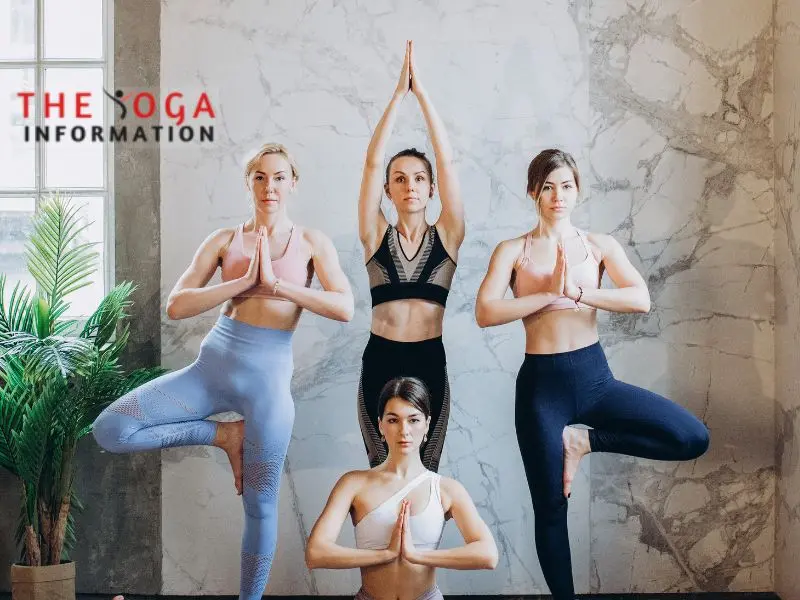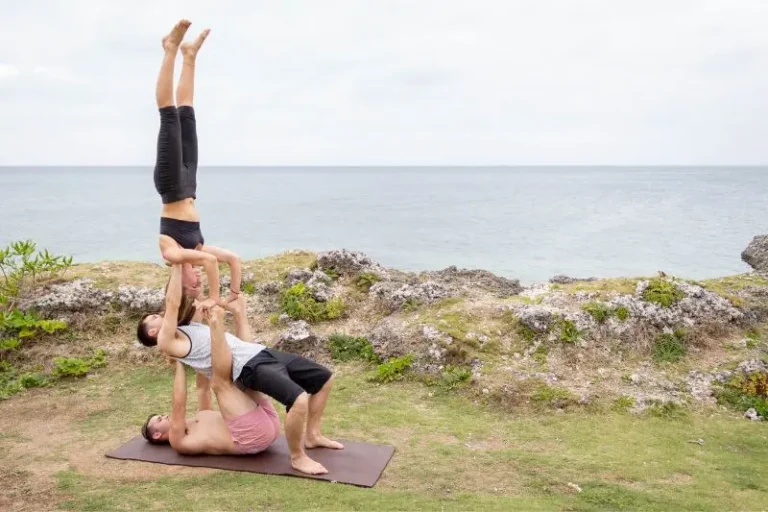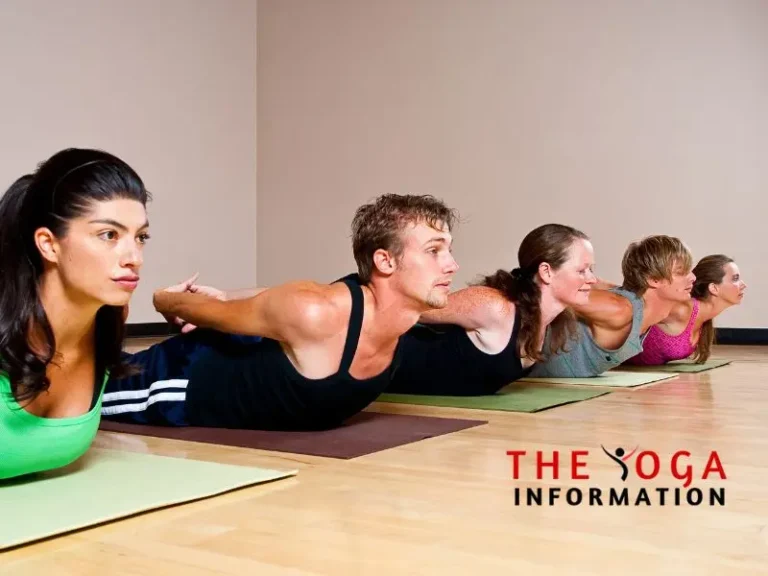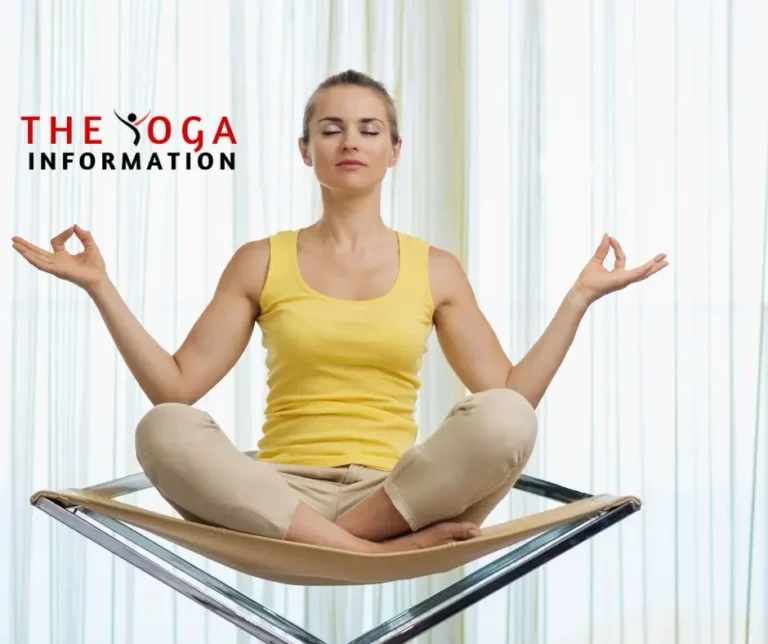4-person yoga poses offer a unique opportunity for practitioners to cultivate balance and harmony while fostering a sense of connection and unity. These complex poses require not only individual strength and flexibility, but also a deep understanding of collaboration and communication among the participants. To achieve a successful 4-person yoga pose, it is essential to focus on proper alignment, synchronized breathing, and mutual support. In this guide, we will explore expert tips and techniques for mastering these challenging yet rewarding poses, providing valuable insights into how to achieve a state of collective balance and harmony through the practice of yoga.
4-person yoga poses
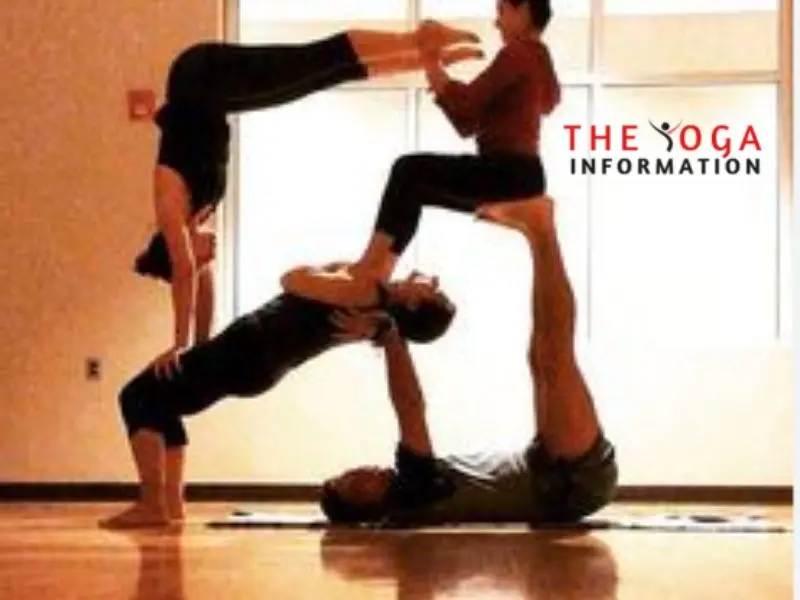
Start with beginner-friendly poses such as group tree pose, four-person boat pose, or quadruple downward-facing dog.
Group Tree Pose
Begin your 4-person yoga journey with the grounding and balancing Group Tree Pose. This pose not only requires individual stability but also encourages teamwork and synchronization. To get into the pose, stand in a circle with your group, place the soles of your feet against each other’s and bring your hands to your hearts. Slowly lift one foot and place it on your inner thigh, finding your balance while supporting each other. This pose promotes concentration, focus, and a sense of unity within the group.
Four-Person Boat Pose
Next up, challenge your core strength and teamwork with the Four-Person Boat Pose. This dynamic pose not only engages the abdominal muscles but also requires coordination and communication among all participants. Begin seated facing each other, with your knees bent and feet flat on the floor. As you lean back, lift your feet off the ground and extend your arms forward, creating a balanced and connected boat shape with your group. This pose fosters camaraderie and encourages everyone to work together to maintain stability and alignment.
Quadruple Downward-Facing Dog
Take your practice to the next level with the Quadruple Downward-Facing Dog, a rejuvenating and energizing pose that amplifies the benefits of the traditional downward-facing dog. In this pose, each person assumes the downward-facing dog position while supporting and connecting with the others in the group. This pose not only enhances flexibility and strength but also cultivates a sense of trust and shared experience. It’s a wonderful way to deepen your connection with others while reaping the physical benefits of the pose.
Techniques for Achieving Balance and Harmony
Build a Strong Foundation
In 4-person yoga poses, a strong foundation is key to achieving balance and harmony. Focus on grounding through your feet and maintaining a stable base as a group. Distribute weight evenly among the participants and engage your core muscles to create a solid foundation for the poses.
Utilize Counterbalance and Support
Explore the concept of counterbalance within your group to achieve stability and harmony in the poses. By distributing and redistributing weight among the participants, you can create a sense of equilibrium and support, allowing the group to move and hold the poses with greater ease.
Cultivate Mindful Awareness
Encourage your group to cultivate mindful awareness throughout the practice. By staying present in the moment and attuned to each other’s movements and energy, you can deepen the connection and synergy within the group, leading to a more harmonious and unified experience.
Experiment with Variations
Once you feel comfortable with the foundational 4-person yoga poses, don’t be afraid to experiment with variations and creative adaptations. Explore different hand placements, body angles, and expressions within the poses, allowing your group to infuse personal creativity and expression into the practice.
Embrace the Journey
Above all, remember to embrace the journey of practicing 4-person yoga poses. Approach each session with a spirit of curiosity, openness, and joy. Allow the experience to unfold organically, and revel in the beauty of connecting with others through the art of yoga.
Building Trust and Connection
The foundation of successful 4-person yoga poses lies in trust and effective communication among the participants. Trust-building exercises play a crucial role in creating a safe and supportive environment for everyone involved. When practicing challenging poses that require close physical proximity and coordination, trust is essential to ensure that each participant feels secure and comfortable throughout the practice.
To build trust within the group, consider incorporating trust-building exercises such as partner yoga, where participants rely on each other for support and balance. Partner yoga poses can help individuals develop trust, communication, and a deeper connection with their fellow practitioners. These exercises not only strengthen the bond within the group but also foster a sense of unity and cooperation.
In addition to trust-building exercises, effective communication strategies are vital for ensuring a smooth and cohesive experience during 4-person yoga poses. Clear and open communication among participants can prevent misunderstandings, reduce the risk of injury, and promote a sense of shared responsibility for the collective practice.
Support and Connection
Support Within the Group
In a group yoga setting, the support offered by fellow practitioners creates a nurturing environment that fosters growth and exploration. Whether it’s a gentle adjustment in a pose, an encouraging word, or simply being present and holding space for one another, the support within the group is invaluable. This support can help individuals feel more secure in trying new poses, pushing their limits, and deepening their practice.
Connection and Unity
Yoga is often described as a union of mind, body, and spirit, and this union extends to the group as well. When practitioners come together with a shared intention, there is a palpable sense of unity and connection. This connection goes beyond the physical realm and delves into the emotional and spiritual aspects of the practice. It’s a space where individuals can feel seen, heard, and understood, fostering a sense of belonging and camaraderie.
4-Person Yoga Poses and Teamwork
Now, let’s integrate the concept of support and connection into the practice of 4-person yoga poses. These poses require a high level of coordination, communication, and trust among the practitioners involved. Each person’s role is vital, and the support and connection within the group are essential for successfully executing these poses. Whether it’s a dynamic acro-yoga sequence or a synchronized meditative posture, the collective effort and mutual support elevate the experience to a new level.
Benefits of Offering and Receiving Support
By actively offering support to others within the group, practitioners not only uplift their peers but also deepen their own practice. It cultivates a sense of empathy, compassion, and mindfulness, which are fundamental aspects of yoga philosophy. On the other hand, receiving support from fellow practitioners can instill a sense of trust, gratitude, and humility, creating a reciprocal exchange of positive energy within the group.
Expert Tips for Success
Communication and Trust
Effective communication is essential when practicing 4-person yoga poses. Before attempting any pose, establish clear and open communication with your partners. Discuss any concerns, limitations, or preferences to ensure a safe and enjoyable experience for everyone involved. Trust is also fundamental in group yoga, as you will be relying on your partners for support and balance.
Establishing Roles
Assigning specific roles within the group can help streamline the execution of 4-person yoga poses. Designate a leader or facilitator who can guide the group through the poses, ensuring that everyone understands their responsibilities and movements. Having clear roles can enhance coordination and make the experience more cohesive.
Focus on Breath and Alignment
Maintaining proper breathing and alignment is crucial in any yoga practice, and 4-person poses are no exception. Encourage your group to synchronize their breath and focus on aligning their bodies to create stability and harmony within the poses. Mindful breathing and alignment will not only improve the physical execution of the poses but also deepen the collective experience.
Start with Beginner-Friendly Poses
If you and your group are new to 4-person yoga poses, it’s advisable to start with beginner-friendly poses that allow for gradual progression and mastery. Simple poses such as “Four-Handed Tree Pose” or “Quad Squat” can serve as excellent entry points, helping you build confidence and familiarity with group dynamics before advancing to more complex poses.
Embrace Patience and Persistence
Mastering 4-person yoga poses may take time, patience, and persistence. Embrace the learning process and celebrate small victories along the way. Remember that the journey of practicing together as a group is just as rewarding as achieving the final pose, fostering a sense of camaraderie and shared accomplishment.
Conclusion
The transformative potential of dynamic group yoga exercises is truly remarkable. By participating in these practices, individuals can experience not only physical benefits but also emotional and mental growth. The sense of community and unity fostered in group yoga sessions can be empowering and uplifting, leading to a deeper connection with oneself and others. I encourage readers to explore the enriching journey that dynamic group yoga exercises can offer, as it has the potential to bring about positive transformations in their overall well-being. Embracing this practice can lead to a greater sense of balance, resilience, and harmony in one’s life, making it a valuable addition to any yoga practitioner’s routine.
